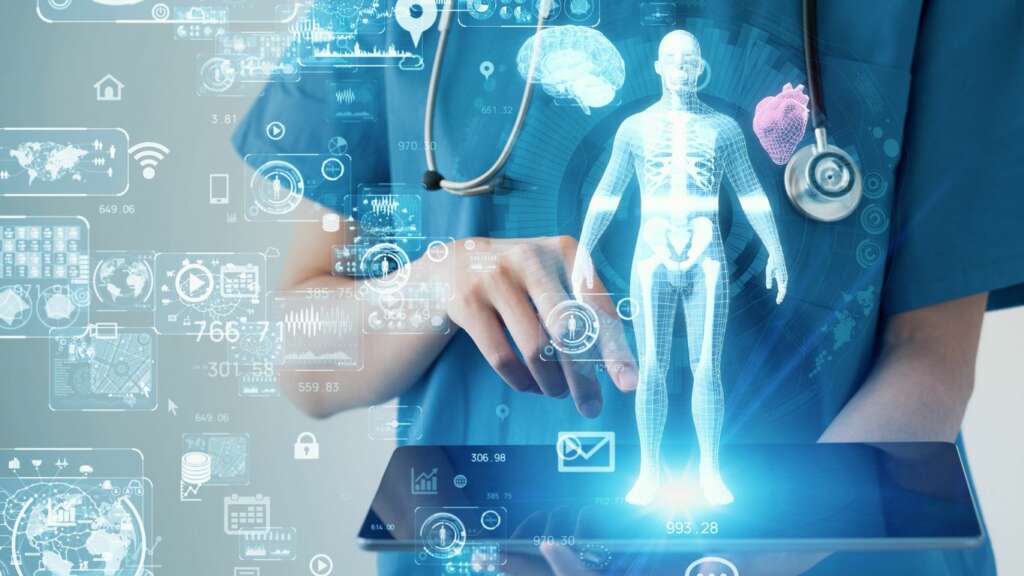
The power of AI in healthcare

By Kirsty Biddiscombe, UK Head for AI, ML & Analytics at NetApp
Artificial intelligence (AI) adoption is on the rise in multiple industries. But, perhaps surprisingly, its use has sky-rocketed in healthcare – a sector traditionally slow to adapt to new innovations.
In fact, the number of applications of AI within the healthcare sector has exploded to hundreds of use cases and will continue to rise in the coming years. And healthcare organisations are already seeing the benefits: the integration of automation has enabled the digitalisation of administrative tasks and unlocked the potential of faster, more accurate patient diagnoses, as well as the fast-tracking of drug development.
While this technology is already widely prevalent, the question of why AI is essential in healthcare, for many professionals and their patients, remains.
AI in healthcare
To find out why AI plays a role in an industry that has historically been a digital laggard, it’s important to consider the context of the present day. After all, it’s contemporary problems that require new, state-of-the-art solutions such as this.
Like it or not, the UK population is ageing. Within the next 25 years, for instance, it’s predicted that the number of people over the age of 85 will double to 2.6 million. What’s more, there has been an increase in the proportion of people aged over 75 with long-term conditions, and their needs are likely to become more complex.
Adding complexity to this is the Covid-19 pandemic, which has accelerated the shift to digital health services, including online consultations, which would have taken a decade to develop organically.
AI allows people to manage their conditions independently from home, using automated alerts and remote monitoring of patients conditions. New innovations in sensor technology means patients can be linked to home-help services who can act as a first response which helps the NHS manage resources and assign emergency care as and when it’s needed.
Examples of this can be recognised through using fall alarms, where the motion of the sensor automatically detects when a patient has a fall. Sensors which helps identify health patterns across particular regions and proactively provides alerts and advice to those patients in that area. Digital health wearable monitors, which allows medical condition monitoring such a heart rate drops and spikes, chemotherapy progress monitoring, even food intake and insulin levels.
Using Large Language Models, this could bring healthcare to your home through health care digital assistants. Imagine a model of digital assistant, such as Alexa, Siri, ChatGPT or Google Bard, specifically designed to provide trusted and authorised medical knowledge to patients in their home. By describing your symptoms to the health digital assistant, not only could the AI potentially diagnose your current condition but also alert emergency services, connect to local assigned contacts and even schedule appointments, consultants, alerts and reminders for the patient. Computer Vision could even be applied so that the machine learning models could be used to identify specific diagnosis and automate alerts to consultants. The possibilities are endless.
On top of homecare monitoring and assistance, proactive Biomedical modelling can be used to not only understand what conditions the patients are likely to develop, but also how to prevent the condition and the best course of action for their specific genomic sequence. This could mitigate the conditions or even prevent them altogether.
Bringing AI capabilities to clinicians
While AI already has numerous benefits, healthcare professionals are looking at how they can improve their practices so that if something like the recent pandemic happens again, they are prepared – and AI is one tool that can help drastically.
AI paves the way for healthcare professionals to execute administrative tasks and better public health management. For example, the technology has allowed for the automation of appointment scheduling and for more seamless data input into the electronic health record.
And there are numerous other examples in which AI has already brought benefits. For example, AI in genome sequencing and its application alongside the heel prick test on newborn children – which shows if they have a condition called Keratoconus. The condition, if left untreated, can lead to blindness in adulthood. But by identifying it early, a reasonably simple procedure can be actioned on the child to mitigate the development of the condition and make a difference to the long-term prognosis.
Incorporating AI is increasingly crucial, then, as it can streamline healthcare operations, enabling patients to receive timely care.
AI to tackle strokes
A specific example of how AI helps patients and healthcare professionals is when it comes to strokes, where every second counts when it comes to treating patients.
With the integration of technology and biomedical engineering solutions in the healthcare sector, AI can aid in swiftly diagnosing strokes. This is crucial in reducing brain tissue loss caused by oxygen shortage resulting from the blood clot.
In addition, automation plays a vital role in selecting appropriate therapy and treatment methods for stroke patients. It’s leading to more accurate predictions of patient outcomes on a case-by-case basis that can be done earlier in the treatment process.
Computer Vision, for example, helps stroke patients swiftly identify stroke types by scanning the patient’s face. Specialists then visually review the images in real time, to determine the type of stroke the patient is experiencing, thus identifying the best course of action.
What if Computer Vision accurately diagnosed strokes, incorporating patient records to optimise machine learning solutions for faster diagnosis without specialist availability? This could mean faster diagnosis for more patients. Fundamentally, and even in this case, AI is not pertinent without pertinent data: the models are only as good as the data.
AI technology has the ability to bridge the gap between perpetually rising demand for better healthcare services and empathy-centric methods of providing care to patients. The conception, development and adoption of AI has already been life changing for patients. It will be interesting to see how new techniques and initiatives can take this from life changing to life saving in the future, and I’d encourage any clinician or patient to embrace the benefits it brings.


